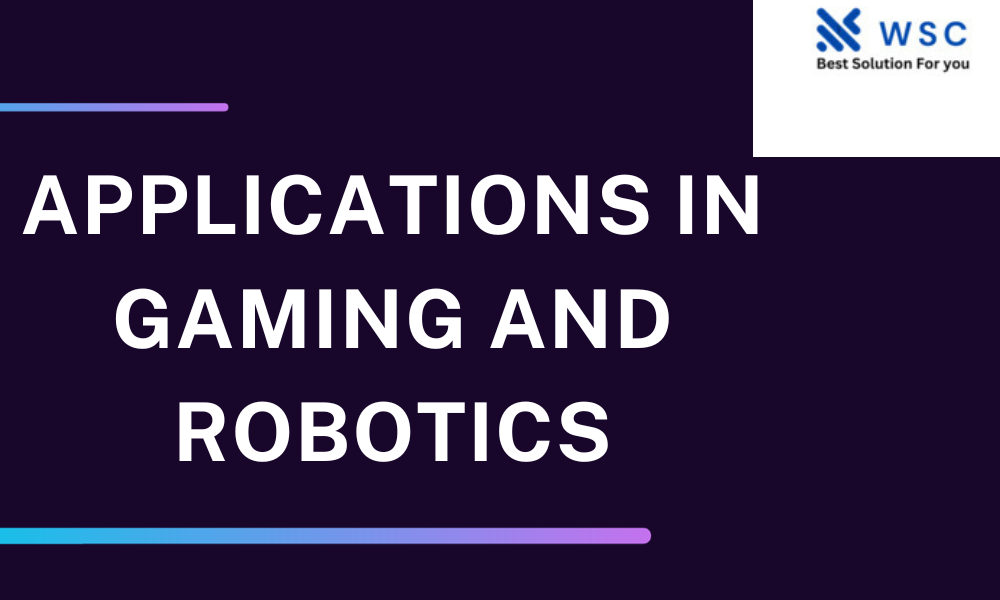In the ever-evolving landscape of technology, Artificial Intelligence (AI) has emerged as a transformative force, not only revolutionizing industries but also enhancing our daily lives. Two exciting domains where AI has made significant strides are gaming and robotics. In this article, we explore the multifaceted applications of AI in gaming and robotics, showcasing how this cutting-edge technology has redefined the way we interact with virtual worlds and intelligent machines.
AI in Gaming: Shaping Immersive Experiences
1. Character Behavior and Realism
One of the most striking applications of AI in the gaming industry is the creation of lifelike character behavior. Gone are the days of predictable NPC (non-playable character) actions. AI algorithms now empower characters to make intelligent decisions, adapt to player choices, and exhibit human-like emotions. This dynamic character behavior not only enhances gameplay but also immerses players in rich, believable game worlds.
2. Procedural Content Generation
AI-driven procedural content generation has unlocked infinite possibilities in game design. From creating vast, procedurally generated open worlds to generating unique quests and landscapes, AI algorithms ensure that no two gaming experiences are alike. This not only saves development time but also keeps players engaged with novel challenges in every playthrough.
3. Adaptive Difficulty Levels
AI’s ability to analyze player performance in real-time allows games to adapt their difficulty levels. This ensures that players are neither overwhelmed nor bored, maintaining the perfect balance between challenge and enjoyment. Adaptive difficulty keeps players invested and motivated to conquer new challenges, promoting longer gaming sessions.
4. Natural Language Processing for Dialogue
Gone are the days of selecting dialogue options with limited outcomes. AI-driven Natural Language Processing (NLP) enables dynamic and context-aware dialogues between players and in-game characters. This enhances storytelling and player immersion, making narratives feel more interactive and personalized.
AI in Robotics: Pioneering Automation and Precision
1. Autonomous Robots
In the field of robotics, AI has propelled the development of autonomous robots that can perform complex tasks with precision. From self-driving cars to delivery drones, AI algorithms enable robots to navigate real-world environments, make decisions, and adapt to unforeseen obstacles. This advancement has immense implications for industries like logistics, healthcare, and manufacturing.
2. Medical Robotics
AI-powered robots have found their way into operating rooms and healthcare facilities. Surgical robots, for instance, assist surgeons with unparalleled precision, reducing the margin of error and improving patient outcomes. AI’s ability to analyze vast medical datasets also aids in disease diagnosis and treatment planning.
3. Humanoid Robots
The concept of humanoid robots, once confined to science fiction, is now a reality. These robots, equipped with AI, can understand and respond to human gestures and speech. They find applications in fields such as customer service, education, and even companionship for the elderly.
4. Environmental Monitoring
AI-driven robots are employed for environmental monitoring and conservation efforts. They can navigate rugged terrains, collect data on wildlife, and assess the impact of climate change. These robots are invaluable tools for scientists and researchers working to safeguard our planet.
The Synergy of AI in Gaming and Robotics
The convergence of AI in gaming and robotics is not just a coincidence; it’s a strategic move towards creating seamless human-machine interactions. Consider a scenario where a gamer uses a VR headset to explore a digitally simulated forest. The AI algorithms responsible for the lush forest, dynamic wildlife behavior, and even the weather patterns are the same as those powering environmental monitoring robots.
This synergy extends beyond the gaming experience. Robotics that can learn from gaming scenarios can adapt to real-world situations more effectively. For instance, a robot designed for disaster response can leverage gaming AI to improve decision-making in high-stress environments.
import random
class Character:
def __init__(self, name):
self.name = name
self.health = 100
self.mood = "neutral"
def decide_action(self):
# AI-driven decision-making
if self.health < 30:
self.mood = "fearful"
return "Run away"
elif self.mood == "fearful":
self.mood = "neutral"
return "Regain composure"
else:
action = random.choice(["Attack enemy", "Defend", "Explore"])
return action
# Create an AI character
ai_character = Character("AI Character")
# Simulate decision-making
for i in range(5):
action = ai_character.decide_action()
print(f"{ai_character.name} decides to: {action}")
In conclusion, the applications of AI in gaming and robotics have transcended their initial boundaries. AI’s ability to mimic human behavior, enhance realism, and make informed decisions is shaping the future of both industries. As technology continues to advance, we can only anticipate more groundbreaking innovations and a deeper integration of AI into our daily lives.
Check our tools website Word count
Check our tools website check More tutorial




